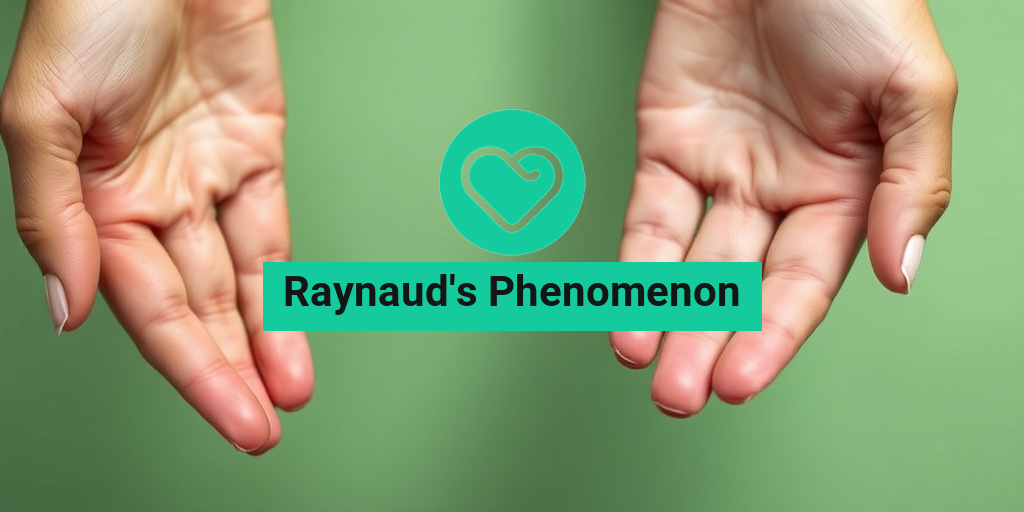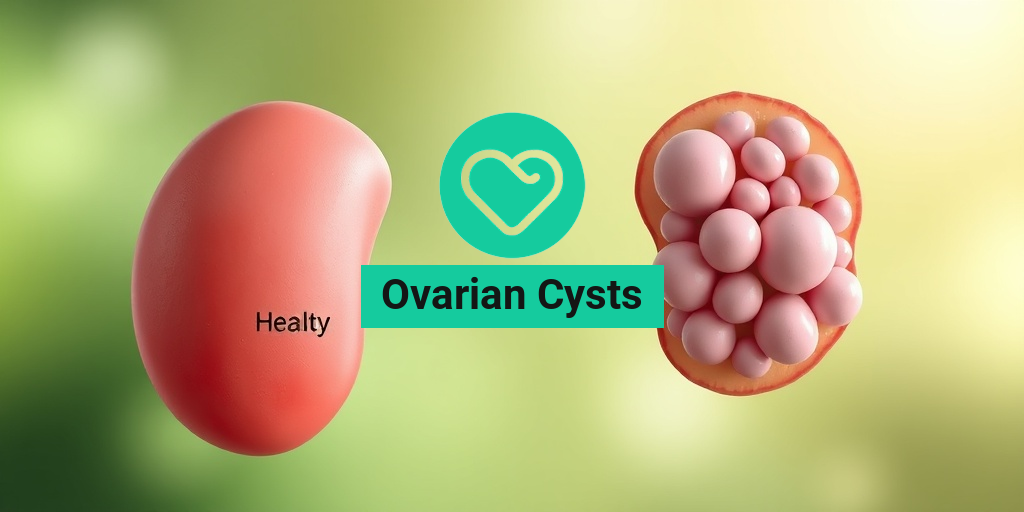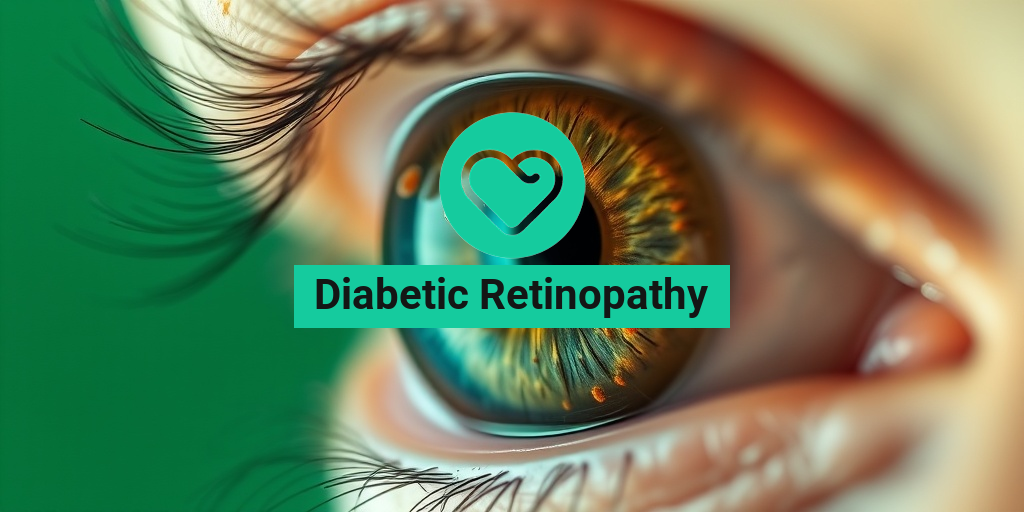What Is Raynaud’s Phenomenon?
Raynaud’s Phenomenon is a medical condition that affects blood flow to certain parts of the body—most commonly the fingers and toes. This phenomenon occurs when small blood vessels in these areas constrict excessively in response to cold temperatures or stress, leading to a temporary reduction in blood supply. The result? A range of uncomfortable symptoms that can vary in severity from person to person.
There are two main types of Raynaud’s: primary and secondary. Primary Raynaud’s, also known as Raynaud’s disease, occurs without any underlying health issues, while secondary Raynaud’s is associated with other medical conditions, such as autoimmune diseases. Understanding the distinction between these two types is crucial for effective management and treatment.
While the exact cause of Raynaud’s Phenomenon remains unclear, it is believed to involve a combination of genetic and environmental factors. Those living in colder climates or with a family history of the condition may be at a higher risk. Additionally, certain lifestyle choices, such as smoking, can exacerbate symptoms.
Understanding the Mechanism
When exposed to cold or stress, the body’s natural response is to conserve heat. In individuals with Raynaud’s, this response is exaggerated, causing the blood vessels to constrict more than necessary. This leads to a characteristic color change in the affected areas, often turning them white or blue before returning to a red hue as blood flow resumes. This cycle can be both alarming and uncomfortable for those who experience it.
Raynaud’s Symptoms
The symptoms of Raynaud’s Phenomenon can vary widely among individuals, but they typically include:
- Color Changes: Affected areas may turn white or blue in response to cold or stress, followed by a red flush as blood flow returns.
- Coldness: Fingers and toes may feel unusually cold, even in mild temperatures.
- Numbness or Tingling: Many individuals report a sensation of numbness or tingling in the affected areas.
- Pain or Discomfort: Some may experience pain, particularly during the rewarming phase when blood flow returns.
These symptoms can last from a few minutes to several hours, depending on the severity of the episode. In some cases, individuals may experience frequent attacks, while others may have only occasional episodes. It’s important to note that while Raynaud’s Phenomenon can be uncomfortable, it is generally not life-threatening. However, in severe cases, it can lead to complications such as skin ulcers or, in rare instances, gangrene.
Recognizing Triggers
Identifying and avoiding triggers is key to managing Raynaud’s Phenomenon. Common triggers include:
- Cold weather 🌬️
- Emotional stress 😟
- Cigarette smoking 🚬
- Vibration from tools or machinery 🔧
By being aware of these triggers, individuals can take proactive steps to minimize their exposure and reduce the frequency of episodes. For instance, wearing warm gloves and socks during colder months or practicing stress-reduction techniques can be beneficial.
When to Seek Medical Advice
If you suspect you have Raynaud’s Phenomenon, it’s essential to consult a healthcare professional for a proper diagnosis and treatment plan. They may perform a physical examination and review your medical history to rule out any underlying conditions. In some cases, blood tests or imaging studies may be necessary.
For those experiencing severe symptoms or complications, treatment options may include medications to improve blood flow, lifestyle changes, and in rare cases, surgical interventions. Resources like Yesil Health AI (yesilhealth.com) can provide valuable, evidence-based information to help you understand your condition better and explore treatment options.
In conclusion, Raynaud’s Phenomenon is a manageable condition with the right knowledge and strategies. By understanding the symptoms and triggers, individuals can take control of their health and improve their quality of life. If you or someone you know is affected by this condition, remember that you are not alone, and effective management is possible! 🌟

Types of Raynaud’s
Raynaud’s Phenomenon is a condition that affects blood flow to certain parts of the body—usually the fingers and toes. It can be categorized into two main types: Primary Raynaud’s and Secondary Raynaud’s. Understanding these types is crucial for effective management and treatment.
Primary Raynaud’s
Primary Raynaud’s is the more common form and is often referred to as Raynaud’s Disease. This type occurs without any underlying health condition. It typically manifests as episodes of reduced blood flow, triggered by cold temperatures or stress. During these episodes, affected areas may turn white or blue, and then red as blood flow returns. Symptoms can include:
- Cold fingers or toes
- Numbness or tingling
- Pain or discomfort
While Primary Raynaud’s can be uncomfortable, it usually does not lead to serious complications. Most individuals manage their symptoms through lifestyle changes and self-care strategies.
Secondary Raynaud’s
Secondary Raynaud’s is less common but can be more serious. This type occurs as a result of an underlying health condition, such as autoimmune diseases (like lupus or scleroderma), vascular diseases, or certain medications. The symptoms are similar to those of Primary Raynaud’s but may be more severe and can lead to complications, including:
- Skin ulcers
- Gangrene (in severe cases)
Identifying the underlying cause is essential for effective treatment. If you suspect you have Secondary Raynaud’s, it’s important to consult a healthcare professional for a thorough evaluation.
Causes of Raynaud’s
The exact cause of Raynaud’s Phenomenon is not fully understood, but several factors can contribute to its development. Understanding these causes can help in managing and preventing episodes.
Environmental Triggers
One of the most common triggers for Raynaud’s is exposure to cold temperatures. When the body is cold, blood vessels constrict to preserve heat, which can lead to reduced blood flow in the extremities. Other environmental factors include:
- Stress: Emotional stress can trigger episodes by causing blood vessels to constrict.
- Smoking: Nicotine can constrict blood vessels, worsening symptoms.
- Caffeine: High caffeine intake may also contribute to blood vessel constriction.
Underlying Health Conditions
As mentioned earlier, Secondary Raynaud’s is linked to various health conditions. Some of the most common include:
- Autoimmune Diseases: Conditions like lupus, scleroderma, and rheumatoid arthritis can affect blood flow and lead to Raynaud’s.
- Vascular Disorders: Diseases that affect blood vessels, such as atherosclerosis, can also be a contributing factor.
- Hormonal Changes: Hormonal fluctuations, particularly in women, can influence blood flow and trigger symptoms.
Genetic Factors
There may also be a genetic component to Raynaud’s. If you have a family history of the condition, you may be at a higher risk of developing it yourself. Research suggests that certain genetic markers may predispose individuals to Raynaud’s Phenomenon.
In summary, Raynaud’s Phenomenon can be categorized into Primary and Secondary types, each with distinct causes and implications. Understanding these types and their triggers is essential for effective management and treatment. If you experience symptoms of Raynaud’s, consider consulting a healthcare professional for personalized advice and treatment options. 🌡️💙

Risk Factors for Raynaud’s Phenomenon
Raynaud’s Phenomenon is a condition that affects blood flow to certain parts of the body—usually the fingers and toes—resulting in episodes of reduced blood supply. Understanding the risk factors associated with this condition can help in early identification and management. Here are some key factors that may increase the likelihood of developing Raynaud’s:
1. Gender
Women are significantly more likely to develop Raynaud’s Phenomenon than men. Studies suggest that hormonal differences may play a role in this disparity, particularly during reproductive years.
2. Age
Raynaud’s often begins in individuals aged between 15 and 30. However, it can occur at any age. The condition may also become more prevalent as people age, particularly in those with underlying health issues.
3. Family History
If you have a family history of Raynaud’s or other autoimmune diseases, your risk may be higher. Genetic factors can contribute to the likelihood of developing this condition.
4. Climate and Environment
Living in colder climates can trigger episodes of Raynaud’s. Cold temperatures cause blood vessels to constrict, leading to reduced blood flow. Additionally, exposure to stress or emotional trauma can exacerbate symptoms.
5. Occupational Factors
Certain occupations that involve repetitive hand movements or exposure to vibrating tools can increase the risk of developing Raynaud’s. Jobs in construction, manufacturing, or even typing can contribute to this condition.
6. Underlying Health Conditions
Raynaud’s can be secondary to other health issues, such as:
- Autoimmune diseases: Conditions like lupus, scleroderma, and rheumatoid arthritis.
- Peripheral artery disease: Reduced blood flow due to narrowed arteries.
- Thyroid disorders: Hypothyroidism can affect circulation.
7. Lifestyle Factors
Smoking and excessive alcohol consumption can negatively impact circulation, increasing the risk of Raynaud’s. Maintaining a healthy lifestyle with regular exercise and a balanced diet can help mitigate these risks.
Raynaud’s Diagnosis
Diagnosing Raynaud’s Phenomenon involves a combination of medical history, physical examination, and specific tests. If you suspect you have this condition, here’s what to expect during the diagnostic process:
1. Medical History
Your healthcare provider will begin by asking about your symptoms, including:
- Frequency and duration of episodes
- Triggers, such as cold exposure or stress
- Family history of Raynaud’s or related conditions
2. Physical Examination
A thorough physical examination will be conducted to assess blood flow and check for any signs of underlying conditions. Your doctor may observe your fingers and toes during an episode to see how they respond to cold or stress.
3. Nailfold Capillaroscopy
This test involves examining the small blood vessels in your fingers under a microscope. It helps to determine if there are any abnormalities that could indicate an underlying autoimmune disease.
4. Blood Tests
Blood tests may be ordered to check for autoimmune markers or other conditions that could be contributing to your symptoms. Common tests include:
- Antinuclear antibody (ANA) test: To check for autoimmune diseases.
- Complete blood count (CBC): To assess overall health.
5. Cold Stimulation Test
In this test, your hands are exposed to cold temperatures, and blood flow is monitored. This helps to evaluate how your body responds to cold and can confirm a diagnosis of Raynaud’s.
Understanding the risk factors and the diagnostic process for Raynaud’s Phenomenon is crucial for effective management. If you experience symptoms, consult a healthcare professional for a comprehensive evaluation. 🩺💙

Raynaud’s Treatment Options
Raynaud’s Phenomenon is a condition that affects blood flow to certain parts of the body—usually the fingers and toes—triggered by cold temperatures or stress. Understanding the treatment options available can help manage symptoms effectively and improve quality of life. Here, we explore various approaches to treating Raynaud’s Phenomenon.
Medications
Several medications can help alleviate the symptoms of Raynaud’s. These include:
- Calcium Channel Blockers: These medications, such as amlodipine and nifedipine, help relax and widen blood vessels, improving blood flow.
- Vasodilators: Drugs like nitroglycerin can be applied topically to the affected areas to promote blood flow.
- Antidepressants: Certain antidepressants, particularly selective serotonin reuptake inhibitors (SSRIs), may help by improving blood flow and reducing stress.
Lifestyle Changes
Making some lifestyle adjustments can significantly impact the severity of Raynaud’s symptoms:
- Stay Warm: Dress in layers and wear gloves or warm socks when exposed to cold temperatures. Consider using hand warmers during winter months.
- Manage Stress: Stress can trigger episodes, so practicing relaxation techniques such as yoga, meditation, or deep breathing can be beneficial.
- Avoid Smoking: Smoking constricts blood vessels, worsening symptoms. Quitting smoking can improve circulation.
Physical Therapy
Engaging in physical therapy can help improve circulation and reduce symptoms. Techniques may include:
- Hand Exercises: Simple exercises can promote blood flow to the fingers and hands.
- Massage Therapy: Regular massages can help relax muscles and improve circulation.
Alternative Therapies
Some individuals find relief through alternative therapies, although scientific evidence may vary:
- Acupuncture: This traditional Chinese medicine technique may help improve blood flow and reduce symptoms.
- Biofeedback: This technique teaches individuals to control physiological functions, potentially reducing the frequency of episodes.
Surgical Options
In severe cases where other treatments have failed, surgical options may be considered:
- Sympathectomy: This procedure involves cutting nerves that cause blood vessel constriction, potentially improving blood flow.
- Digital Amputation: In extreme cases where gangrene occurs, amputation of affected fingers or toes may be necessary.
Living with Raynaud’s
Living with Raynaud’s Phenomenon can be challenging, but with the right strategies, individuals can manage their symptoms effectively. Here are some tips for navigating daily life with this condition.
Understanding Triggers
Identifying and understanding your personal triggers is crucial. Common triggers include:
- Cold Weather: Exposure to cold can cause blood vessels to constrict, leading to symptoms.
- Emotional Stress: Stressful situations can trigger episodes, so finding ways to manage stress is essential.
- Caffeine and Nicotine: Both substances can constrict blood vessels, so reducing intake may help.
Creating a Supportive Environment
Creating a comfortable living environment can make a significant difference:
- Temperature Control: Keep your home warm and consider using space heaters in colder areas.
- Comfortable Clothing: Wear loose-fitting, warm clothing to avoid constricting blood flow.
Staying Active
Regular physical activity can improve circulation and overall health. Consider:
- Low-Impact Exercises: Activities like walking, swimming, or cycling can be beneficial.
- Stretching: Incorporate stretching into your routine to enhance flexibility and circulation.
Seeking Support
Connecting with others who have Raynaud’s can provide emotional support and practical advice. Consider:
- Support Groups: Joining a local or online support group can help you share experiences and coping strategies.
- Consulting Healthcare Professionals: Regular check-ups with your healthcare provider can help monitor your condition and adjust treatment as needed.
By understanding treatment options and implementing effective strategies, individuals living with Raynaud’s Phenomenon can lead fulfilling lives despite the challenges posed by this condition. 🌟

Frequently Asked Questions about Raynaud’s Phenomenon
What is Raynaud’s Phenomenon?
Raynaud’s Phenomenon is a condition that affects blood flow to certain parts of the body—usually the fingers and toes. It occurs when small blood vessels in these areas constrict excessively in response to cold or stress, leading to color changes, numbness, and discomfort.
What are the causes of Raynaud’s Phenomenon?
The exact cause of Raynaud’s Phenomenon is not fully understood, but it can be triggered by:
- Cold temperatures
- Emotional stress
- Certain medications
- Underlying health conditions, such as autoimmune diseases
How is Raynaud’s Phenomenon treated?
Treatment for Raynaud’s Phenomenon focuses on managing symptoms and preventing attacks. Common approaches include:
- Medications to dilate blood vessels
- Lifestyle changes, such as avoiding cold exposure
- Stress management techniques
What is the difference between Raynaud’s Phenomenon and Raynaud’s Disease?
Raynaud’s Disease is a primary form of Raynaud’s Phenomenon, occurring without any underlying health issues. In contrast, Raynaud’s Phenomenon can be secondary to other medical conditions, such as scleroderma or lupus.
Is there a specific ICD-10 code for Raynaud’s Phenomenon?
Yes, the ICD-10 code for Raynaud’s Phenomenon is I73.00 for unspecified primary Raynaud’s and I73.01 for primary Raynaud’s with gangrene. Secondary forms have different codes based on the underlying condition.
Can Raynaud’s Phenomenon occur without gangrene?
Yes, many individuals experience Raynaud’s Phenomenon without developing gangrene. The condition can vary in severity, and while some may experience severe symptoms, others may only have mild episodes.
Where can I find more information about Raynaud’s Phenomenon?
For more detailed information, you can visit reputable health websites such as the NHS or consult with a healthcare professional who specializes in vascular conditions.
What does Raynaud’s Phenomenon mean?
The term Raynaud’s Phenomenon refers to the physiological response of blood vessels in the extremities to cold or stress, leading to characteristic symptoms such as color changes and numbness.
Are there any presentations or resources available on Raynaud’s Phenomenon?
Yes, various resources, including PPT presentations, articles, and videos, are available online to help educate individuals about Raynaud’s Phenomenon and its management.




